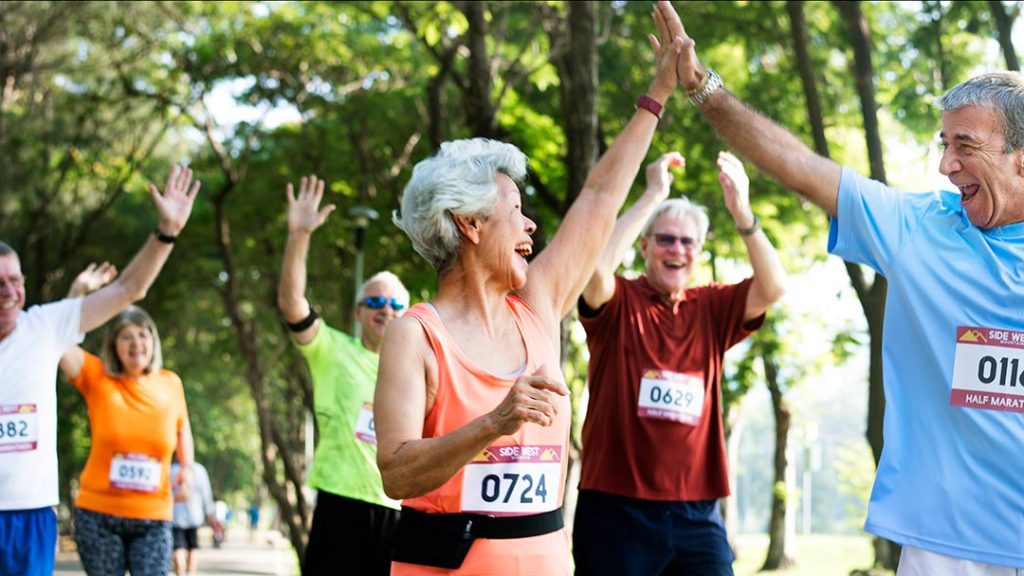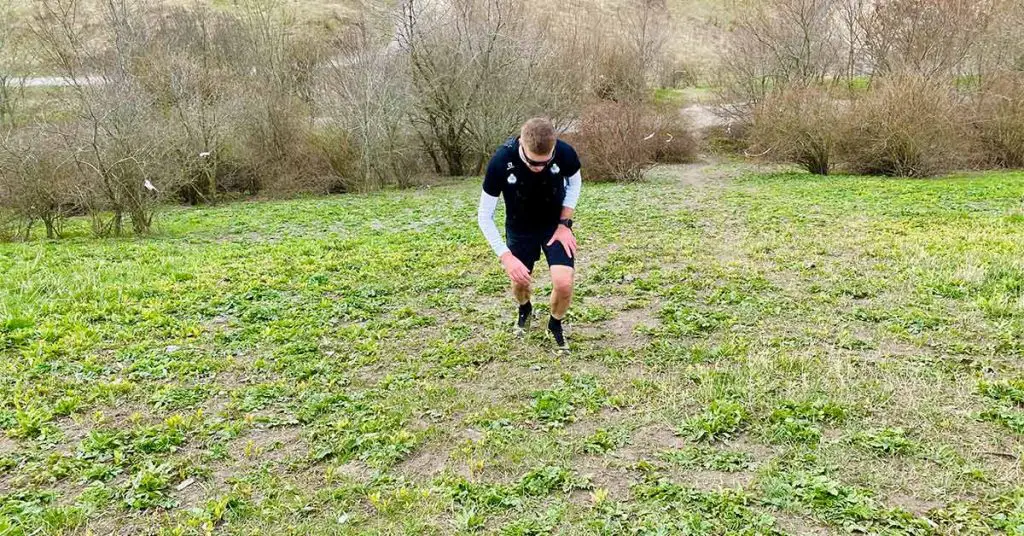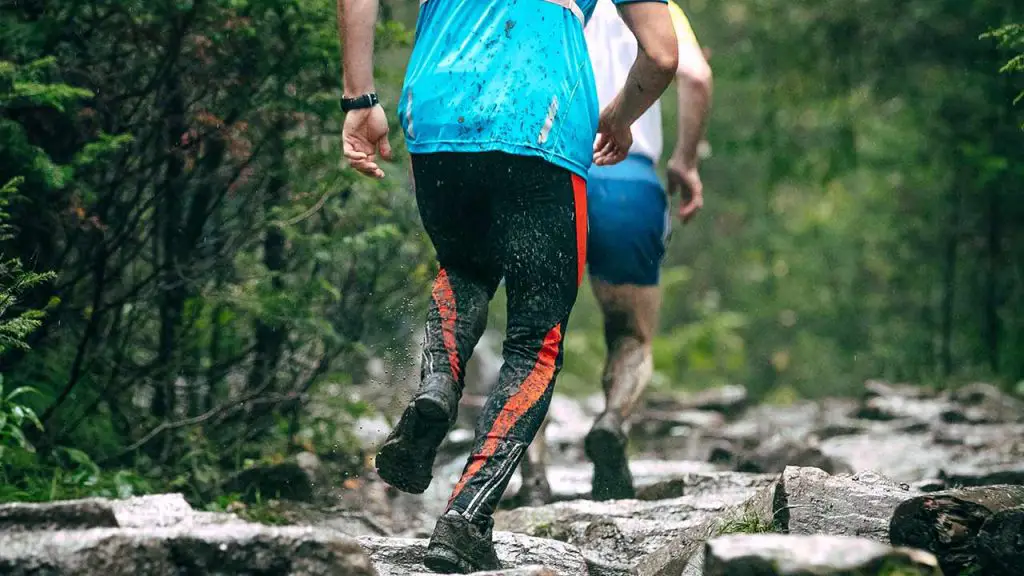Estimated read time: 4 minutes.
As you age, it’s important to stay active and exercise regularly. For many older adults, running is an ideal activity that can help improve overall health and well-being. While running may not seem the most appealing or practical exercise for older adults, many benefits come with becoming a runner later in life. This blog post will provide an outline of how to safely and effectively begin running as an older adult.
What Are The Main Differences In Running Between Younger And Older Runners
When it comes to running, there is no age limit. However, as we age, our bodies undergo changes that should be considered when training and competing. Five of the biggest differences between a younger runner’s body and an older one include a decline in tissue elasticity, muscle mass, and mobility, an increased importance of speed, and a need for more recovery time.
As we grow older, we naturally become less flexible and have increased difficulty with sudden extensions or contractions of muscle groups. Plus, we often begin to lose muscle mass because of aging unless actively maintained by regular physical activity. The aging process also greatly affects mobility, including stiffness in tissue that may have previously been agile.
Additionally, reaching faster speeds can become more challenging with age, requiring a longer warm-up period before beginning any rigorous exercise like speed work. Last but not least, recovery times are longer than they used to be, so rest days should not be skipped since an inability to recover properly will lead to injuries down the road. An older runner must consider this when training or entering races since making adjustments will prevent any long-term damage due to pushing too hard without considering their changed body history.
Steps to Prepare for Running
Before starting any exercise program, it’s important to consider your current health status and consult your healthcare professional about the best approach. Once given the green light, investing in the right equipment is essential for beginning runners over 50 years old and beyond.
Shoes should fit comfortably and support both feet adequately; if necessary, visit a specialty store where personnel can evaluate your gait and recommend shoes based on your needs. Additionally, other gear such as socks, shirts, shorts/pants should be comfortable and offer proper breathability so you don’t get too hot while running or walking outside.
Starting Slowly and Incrementally
The key to safe running is taking it slow at first—start by walking before attempting any runs. Increase frequency, duration (time spent walking/running each day), and intensity (speed) gradually as fitness level improves. Staying consistent over time is key—even if it means only walking three days a week at first—so create a schedule that works best for you! Even 15 minutes of daily activity can make a difference in your long-term health.
Cross-Training for Older Runners
Adding strength training twice weekly will help build muscle strength and increase confidence when doing any physical activity, such as walking or running outdoors. Yoga classes twice per week help maintain flexibility which is especially important for older runners; stretching after runs/walks helps prevent injuries from occurring due to tight muscles from lack of flexibility training.
Non-impact cardio exercises such as swimming or spinning supplement traditional running/walking activities; these exercises are great alternatives on days when outdoor conditions are less than ideal (rainy, cold weather).
Pay attention to stretching
Stretching is a key component of recovery for any level athlete, but especially important as we age. Dynamic stretching before an activity, such as leg swings and arm circles, helps warm up the muscles so that they will respond better when you apply load to them. After runs and workouts, it’s just as important to incorporate static stretching so that your muscles can better recover from short-term stress.
Doing this regularly will help build foundational strength and flexibility that is beneficial in running performance and overall mobility. Remember this critical step in your workout routine – if you invest in your tissue health, it will reward you later on!
Conclusion
Running is a great way to stay active and healthy, especially as we age. It’s important to start slowly by walking before attempting any runs and gradually increase your running sessions’ frequency, duration, and intensity over time. Cross-training with strength training exercises such as yoga or swimming will help build muscle strength and increase flexibility, preventing injuries from occurring in older runners. And finally, stretching both pre-run/walk and post-run/walk is essential for maintaining mobility – don’t skip this step!
By following these tips and staying safe while running, older runners can look forward to many more years of enjoying the health benefits associated with being active. With some commitment and dedication, running in your later years can become a healthy and rewarding part of your life!
FAQ
What type of running shoes should I wear if I’m over 50?
Shoes should fit comfortably and support both feet adequately; if necessary, visit a specialty store where personnel can evaluate your gait and recommend shoes based on your needs. It is also helpful to look for shoes with cushioning properties, as these may reduce the strain on your joints when running. Additionally, consider investing in insoles or orthotics to provide extra cushioning and support. Lastly, ensure that the shoe fits properly—there shouldn’t be any pressure points or rubbing near the toes or heel area. If you experience discomfort from wearing a particular shoe, try another style until you find one that works best for you!
Are there any specific precautions I should take when running as an older adult?
As with any exercise program, pay attention to warning signs such as pain or unusual fatigue that could indicate something is wrong—if this occurs, don’t ignore it and contact your healthcare provider right away. Additionally, it’s important to stay hydrated during runs/walks by drinking plenty of fluids—especially in hot weather conditions—and fuel up afterward with healthy snacks to replenish energy levels and help muscles rebuild for next time! Finally, always be aware of your surroundings when running outdoors so you can run safely and enjoy the experience even more.
- How Many Laps Around a Track is a 5K: Your Guide - October 22, 2023
- When is Track and Field Season? - October 22, 2023
- Understanding the Length: How Long Is a Running Track? - October 22, 2023



